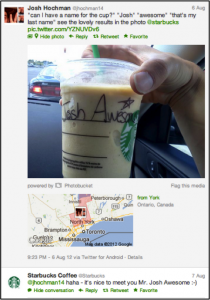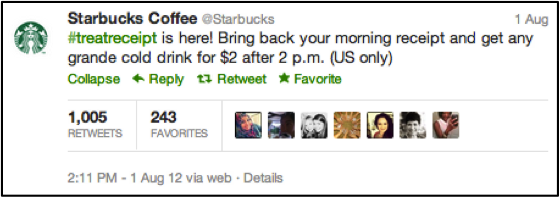Brands both big and small across the globe are looking for the key to social marketing success. The answer may surprise you: it’s STILL all about your content. In fact, it’s so important, we devoted an entire series of white papers to content marketing, delving specifically into four components of effective content marketing: content creation, event sponsorship, social media contests, and understanding Facebook EdgeRank.
After you’ve performed a social audit to find your customers and competitors on social channels, and developed your social goals, in accordance with your overall business goals, it’s time to think about developing content. When you think about the kind of content generation that will jumpstart audience growth on social channels, it’s important to focus on two distinct areas:
- Proactive Content
- Reactive Content
You will likely managing content across multiple channels at once. In order to avoid feeling overwhelmed with platform management and scalable content creation by channel, consider proactively scheduling a portion of your social content. It can provide a solid base of content, providing you ample cushion to focus your limited resources instead on monitoring and responding to timely and relevant developments as they occur – or ‘reactive’ content. We’ll share how Starbucks has successfully implemented this strategy to amass a Twitter following of over 2.76 million users.
Proactive Content – 70% of Your Content
Although proactively scheduling 100% of your content will certainly fill your social channels with content, this is not a recommended strategy. Scheduled content is not conducive to authentic, immediate audience engagement. While all brands share branded messages, like company updates and product offers, it’s not all your consumers are looking for. Promotional and evergreen content should be supplemented with engaging, real-time content to keep up with the ‘here and now’.
Best practices for scheduling proactive content show that 70% of content can be scheduled early in the week, which allows room for reactive content. In the example below, Starbucks spreads the word about their program ‘treat receipt’, in which a customer may bring a receipt verifying an AM purchase to a store in the afternoon for a discounted afternoon pick-me-up. This is a perfect example of a message that can be scheduled ahead of time.
Reactive Content – 30% of Your Content
The other 30% of content should, in turn, be reactive content focused on two areas: popular, timely topics and appropriate audience dialog. Staying abreast of trending topics allows you to leverage popular conversations to receive increased reach and engagement. Connecting trends to how they affect your audience will increase your opportunity for growth. The Nashville, Tennessee tourism board used the trending topic #tourismchat to prompt engaged chat users to plan a trip to Nashville.

Responding to users who have engaged directly with your brand through content moderation is another component of reactive content. Responding to your fans and followers in a timely manner increases your ability to maintain an engaged audience. The key is offering quick, positive, and helpful responses. Starbucks makes a personal connection with a store visitor, who shared an anecdote from his visit. Starbucks took the time to respond, providing Josh a closed-loop social experience.
Successful social marketing requires strategy and planning. By scheduling a portion of content proactively, marketers can spend their remaining time focused on creating authentic, immediate relationships with their audience, either by responding directly to users, or being active in broader digital discussions. For a closer look at specific components of a content marketing strategy, check out our newest resources on content creation, event sponsorship, social media contests, and understanding Facebook EdgeRank.
What is your balance of proactive and reactive content? Spill the beans on Twitter.





